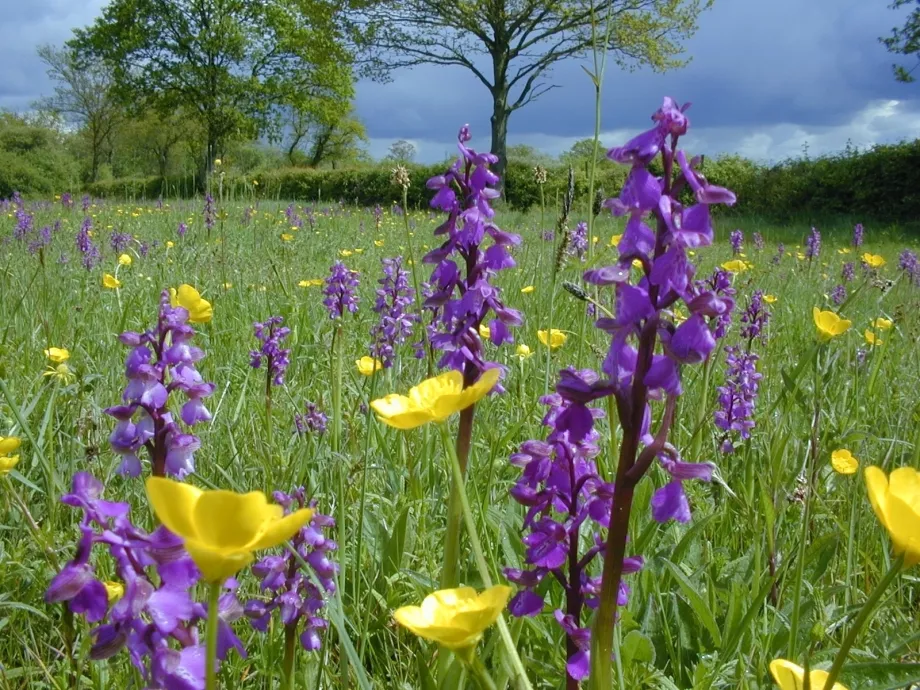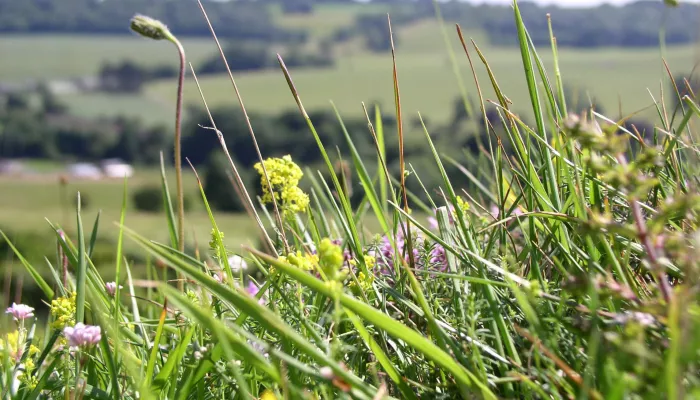
Green winged orchids, Marden Meadows
Kent’s coronation meadow story
In Kent, the designated Coronation Meadow is Marden Meadow, it is one of the best remaining examples of an unimproved hay meadow in Kent.
In 2019, a survey found 2,421 Green Winged Orchids and other indicators such as Dyers Greenweed.
The nearby Highwood meadow is a recipient of seed from Marden Meadow, and the former arable land has been reclassified as a priority habitat due to the work undertaken by the Farmer Cluster, a group of farmers using conservation and regenerative farming ideas to enhance the landscape for wildlife.
Last year, yellow rattle seed was ‘gleaned’ by the Farmer Cluster from another Marden site, Payne's Field, and continues to be used to develop other meadows in the area.
Kent Wildlife Trust has been distributing green hayseed for many years and the coronation project allowed the trust to further focus its efforts, carrying out fencing work to make grazing easier.
The initial seeding work for both Paynes Field and Highwood Meadow built the foundations of the conservation efforts which have now been carried forward by the Farmer Cluster.

Area Manager for Kent Wildlife Trust, Matt Hayes said: “The coronation meadows project helped take the work around our Marden Meadows reserve to the next level.
“Highlighting the diversity and wonder of meadows through the project and restoring and creating new meadows is vitally important. We continue to manage and retain our remnant meadows whilst working with farmers and neighbours to help restore these fantastic habitats."
Marden Farmer Cluster member, Lou Carpenter added: “Marden Meadow is the entire reason that myself and my husband Richard are where we are today in terms of conservation. It remains a source of constant delight and inspiration to us.
“Species-rich neutral grassland is in very short supply in Kent. The funding we received as a Recipient Meadow allowed us to fence our own meadow, Highwood, so it could be grazed, and we received green hay. As a result, many of the plant species in Marden Meadow now grow on our land too. We hope to take this further in the future on the farm and to interest our farming neighbours in doing similar.
“We were delighted that Kent Wildlife Trust and the Coronation Meadows gave us that vital help early on. We are grateful and so is our land.”
Biffa Award, through the Landfill Communities Fund, contributed £1million to fund the equipment and training needed for meadow restorations. In the first three years of the project alone, more than 700 volunteers gave their time to get the project off the ground. Seed was harvested from Coronation Meadows donor sites either as green hay, brush harvested seed or by hand, and this was used to seed second sites in the same area.

